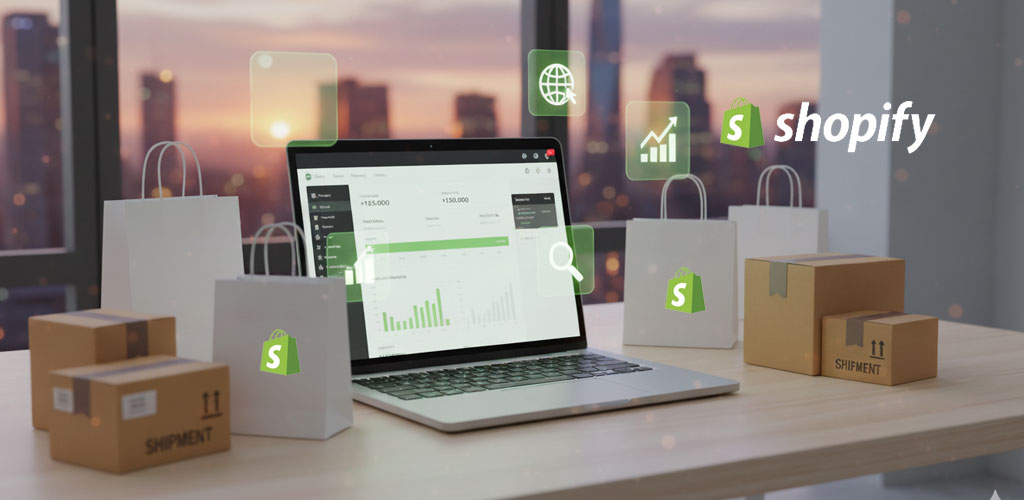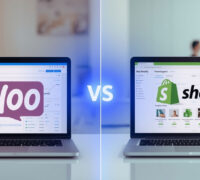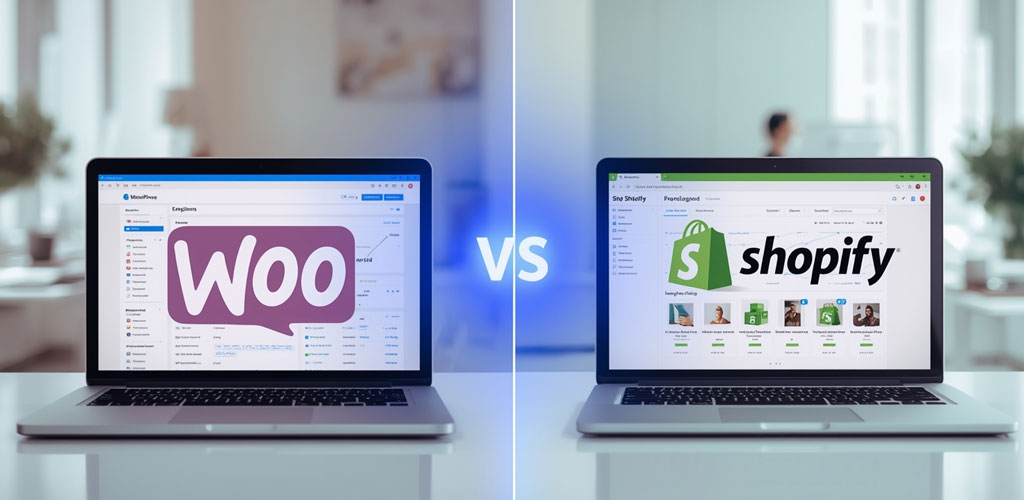
Launching an online store used to take days or even weeks. You had to choose a theme, write product descriptions, design banners, adjust layouts, and figure out what would look good for your brand. Shopify has now changed this entire process with one powerful innovation: the AI Store Builder. This new tool shows how artificial intelligence can simplify ecommerce and help both beginners and experienced sellers launch beautiful, functional stores in record time.
The idea behind the AI Store Builder is simple but game-changing. Instead of manually building a store from scratch, business owners can type a few keywords describing their brand, and Shopify automatically generates complete store designs. This means you can move from idea to launch much faster, without needing design or coding skills.
What Is the Shopify AI Store Builder?
Shopify’s AI Store Builder is an intelligent tool that creates a full online store based on simple text input. You just describe your business using keywords like “minimal skincare brand,” “sporty streetwear,” or “eco-friendly kitchen products.” In seconds, the AI produces ready-made store layouts that include color schemes, images, text sections, and design blocks tailored to the style you described.
Shopify generates multiple design options so you can choose the one that feels closest to your brand identity. Once the layout is created, you can customize any part of it just like a normal Shopify theme. The tool does not lock you in. Instead, it gives you a strong starting point, saving you hours of setup work.
How the AI Store Builder Works
The AI tool uses trained models to understand design patterns, branding styles, color psychology, and content structure. When you enter your keywords, it matches your theme with the most relevant layouts and generates a visually aligned design.
For example, if you enter “luxury jewelry store,” it may create a clean, premium design with gold accents and elegant typography. If you mention “fitness gear store,” the AI may choose energetic colors and bold fonts. The goal is not just to build a store but to build a store that matches the mood and personality of your brand.
The AI Store Builder also integrates with Shopify’s new theme foundation called Horizon. This allows the AI to generate individual design blocks as well, such as hero banners, feature sections, or product highlights. You simply describe the type of section you want, and the AI builds it for you.
Why This Tool Matters for New Entrepreneurs
Starting a business is already stressful. Many small business owners struggle with design, content writing, and layout decisions. Shopify’s AI Store Builder removes that barrier. You do not need to hire a designer, developer, or copywriter to create your first version of the store. The AI does most of the heavy lifting, letting you focus on your product and customers.
It also helps people who have ideas but do not know where to begin. With this tool, anyone can create a store within minutes. The simplicity of the process encourages more people to try ecommerce without fear of complexity.
How Established Brands Can Benefit
Even experienced ecommerce brands can use the AI Store Builder to experiment with new layouts faster. If a business wants to launch a new product line, seasonal store, or landing page, the AI can instantly create fresh concepts. Instead of starting with a blank canvas, teams can begin with AI-generated designs and then fine-tune them.
It also helps brands test multiple styles quickly. Since Shopify generates several design options, marketers and designers can compare different visuals and decide which one fits the campaign or audience better.
AI and Creativity: A Helpful Partner, Not a Replacement
Some people worry that AI tools will replace designers and creators. In reality, Shopify’s AI Store Builder works more like a creative partner. It gives you a strong foundation, but you still have full control. You can edit colors, images, fonts, sections, and content. The AI simply accelerates the initial setup, helping you avoid the time-consuming blank-page stage.
Designers can also use the AI tool to generate inspiration or mock-ups when working on new client projects. Instead of spending hours drafting ideas, they can allow the AI to produce options and then refine them according to the brand’s vision.
Improving Productivity and Reducing Costs
One of the biggest advantages of the AI Store Builder is cost reduction. Many new entrepreneurs cannot afford expensive web designers or branding agencies. With this tool, they get a professional-quality store without paying large upfront fees.
Time is another important benefit. What used to take several days can now be done in minutes. This allows business owners to launch faster, test ideas quickly, and respond to trends instantly. The tool fits perfectly into today’s fast-moving ecommerce world, where speed and agility matter.
The Future of Ecommerce Is Smarter
Shopify’s AI Store Builder is not just a feature; it’s a signal of where ecommerce is heading. More store-building tasks will become automated. More content will be generated instantly. More design decisions will be supported by AI insights. This does not reduce the importance of creativity. Instead, it makes creativity easier and more accessible to everyone.
As AI continues to evolve, we can expect Shopify to introduce even more intelligent tools that help with product descriptions, SEO, inventory suggestions, and marketing content. The AI Store Builder is simply the beginning of a smarter, faster, and more intuitive ecommerce ecosystem.









